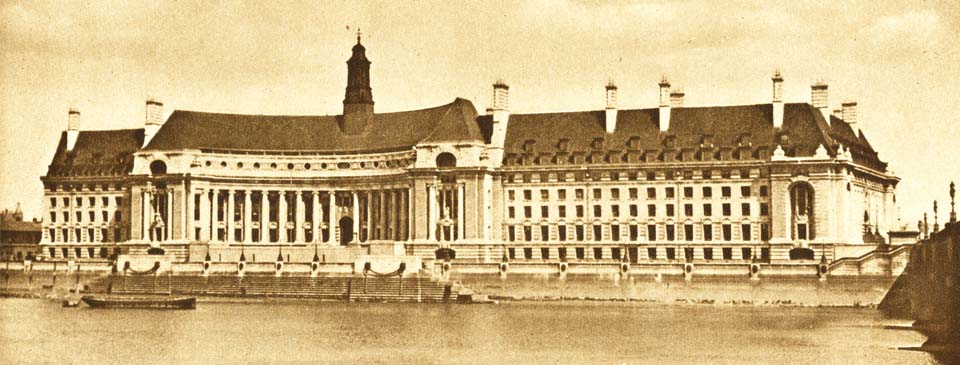In brief – Early-20th century London

County Hall, offices of the London County Council, opened in 1922 on the south side of Westminster Bridge. At that time it was unfinished, hence its lack of symmetry in this photograph. It was built on the site of the earlier Metropolitan Board of Works offices and various wharves and factories. It served as the headquarters of local London government until 1986.
In the early part of the century the old Waterloo Bridge was in poor condition, too narrow for modern traffic and with its piers sinking. A much-loved part of London, the LCC dithered for decades about what to do. After Labour won control of the LCC in 1934 they took a swift decision to replace it with a new bridge, designed by Sir Giles Gilbert Scott. Delayed by the war, and hit multiple times by bombs, the work was finally completed in 1944.
Two days before the declaration of war against Germany in September 1939 the evacuation of London’s children, mothers and hospital patients began, organized for the whole of the metropolitan area by the LCC. In the space of just three days in 1939 almost 400,000 children, 50,000 teachers and over a quarter of a million mothers and babies were moved out of London to more rural parts of the country. The evacuation proved an unpopular move by those affected and by that Christmas thirty-four per cent of children and ninety percent of mothers and babies had moved back again. The government attempted re-evacuation in 1940 but by then more were returning than leaving. London was unaffected during the early days of the conflict a period that became known as the ‘Phoney War’.
When the Second World War was declared many businesses began to move their factories and offices away from Central London and railway companies relocated their headquarters to other parts of the country, understanding that the capital was then a target for German bombing. It was the beginning of the end for London as the country’s manufacturing capital.
The first major wave of attacks on the capital started at five o’clock in the afternoon of Saturday 7th September when a flight of 320 German bombers, escorted by 600 fighter planes attacked London. The fires that burned in the East End and docks were so great that fire crews had to be brought from as far away as Birmingham and Nottingham. From September 1940 the bombing was continuous for seventy-six nights and it became known as the ‘Blitz’.
Initially the authorities tried to prevent the use of underground stations as air-raid shelters. Finally, the government had to give way following large crowds demanding to be allowed to use Liverpool Street station, as well as consistent pressure from Stepney’s communists. By the end of the first month of the Blitz almost 180,000 people were camped in the underground each night. There was little or no provision for the many whose homes and possessions were destroyed, which became an increasing problem as one million four hundred thousand people were left homeless in London in the first eight-month bombardment.


